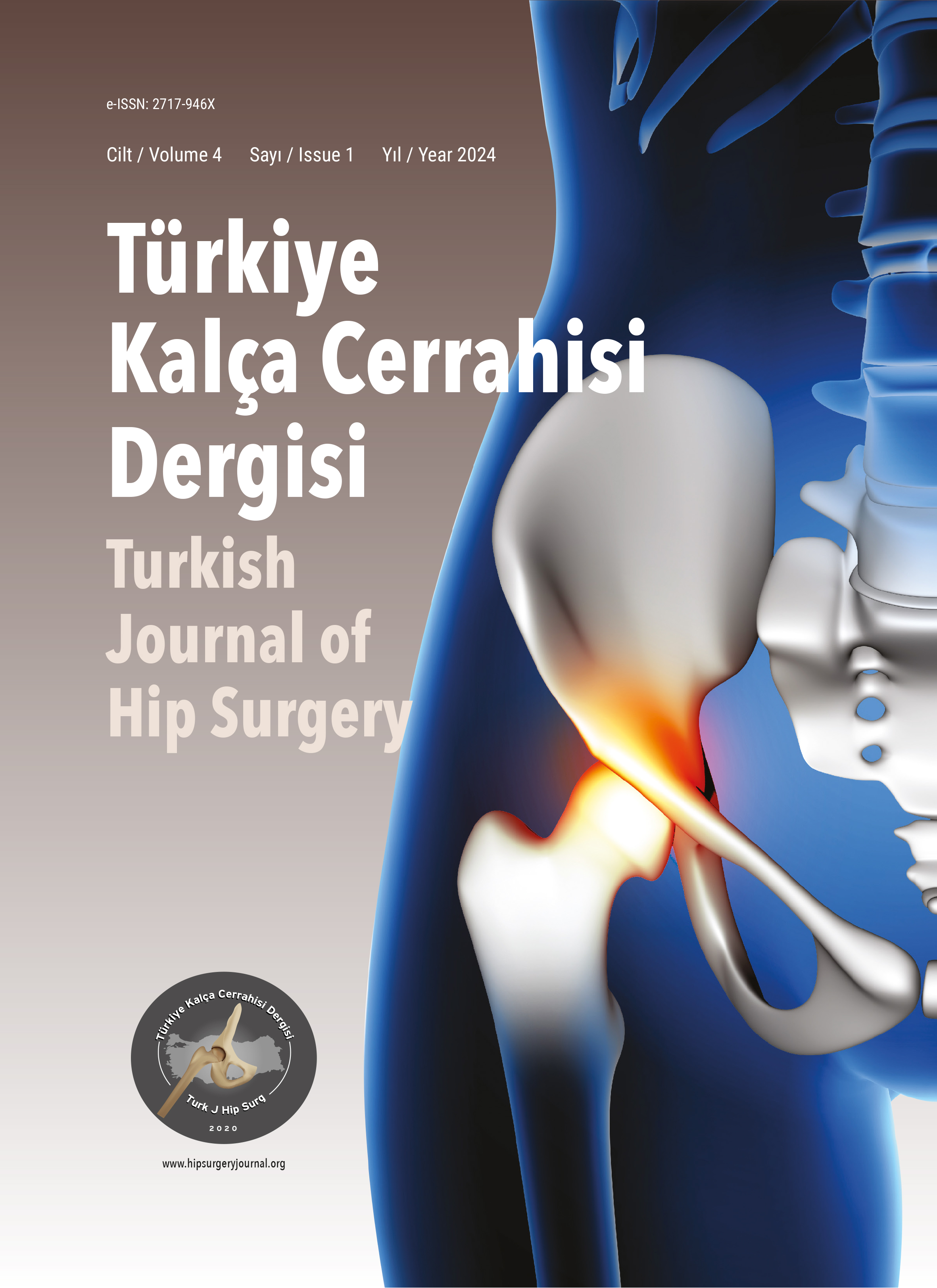
Proximal Femur Metastasis Treatment With Fixation or Hip Replacement. Results of 47 Patients
Selahaddin Aydemir1, Cihangir Türemiş1, Hasan Havitcioglu1, Sermin Özkal2, Ali Balci3, Onur Hapa11Department of Orthopedics and Traumatology, Dokuz Eylul University Faculty of Medicine, Izmir, Turkey2Department of Pathology, Dokuz Eylul University Faculty of Medicine, Izmir, Turkey
3Department of Radiology, Dokuz Eylul University Faculty of Medicine, Izmir, Turkey
Objective: Purpose of the present study was to compare patients with proximal femur metastasis with actual or impending fractures who were treated by fixation or prosthetic hip replacement.
Method: Twenty-seven patients underwent fixation treatment (IM nail, DHS), and 20 patients prosthetic (endoprosthesis or total hip arthroplasty) replacement. Data were analyzed regarding patient demographics, cancer type, localization and type of metastasis, actual or impending fracture, number of bone metastasis, presence of spinal or visceral metastasis and treatment data (ASA class, length of hospital stay or surgery or survival, cement usage, adjuvant treatment, postoperative walking status).
Results: Fixation group (63 years) was younger than prosthesis group (70 years) (p: 0.03). Fixation was more preferred at subtrochanteric area (p˂0.001). Cementation of the lesion was more preferred and surgery time was longer at fixation group (p: 0.01). Greater number of complications (mostly medical) were more likely to be seen in the fixation group (6 1 loosening vs 3 1 dislocation).
Conclusion: It is not still clear whether one implant is clearly superior to other one, however it was revealed again that nailing was mostly preferred for the subtrochanteric area and tended to have more complications although mostly medical and unrelated to implant placement as previously reported
Keywords: proximal femur, metastasis, stabilization
Kırk Yedi Hastada Fiksasyon veya Endoprotez ile Proksimal Femur Metastazı Tedavisi
Selahaddin Aydemir1, Cihangir Türemiş1, Hasan Havitcioglu1, Sermin Özkal2, Ali Balci3, Onur Hapa11Dokuz Eylül Üniversitesi Tıp Fakültesi, Ortopedi ve Travmatoloji Ana Bilim Dalı, İzmir2Dokuz Eylül Üniversitesi Tıp Fakültesi, Patoloji Ana Bilim Dalı, İzmir
3Dokuz Eylül Üniversitesi Tıp Fakültesi, Radyoloji Ana Bilim Dalı, İzmir
Amaç: Bu çalışmanın amacı, proksimal femur metastazına bağlı kalça kırığı olan veya olmak üzere olan, fiksasyon veya protezle tedavi edilen hastaları karşılaştırmaktı.
Yöntem: Fiksasyon tedavisi 27 hastada (IM çivi, DHS), 20 hastada protez (endoprotez veya total kalça protezi) tedavisi yapıldı. Veriler, hasta demografisi, kanser tipi, lokalizasyonu ve metastaz tipi, gerçek veya kırık riski, kemik metastazı sayısı, spinal veya viseral metastaz varlığı ve tedavi verileri (ASA sınıfı, hastanede kalış veya ameliyat veya sağkalım süresi, çimento kullanımı, adjuvan tedavi, postoperatif yürüme durumu) ile ilgili analiz edildi.
Bulgular: Tespit grubu (63 yaş) protez grubundan (70 yaş) daha gençti (p: 0,03). Subtrokanterik alanda fiksasyon daha çok tercih edildi (p˂0,001). Fiksasyon grubunda lezyonun sement uygulaması daha fazla tercih edildi ve ameliyat süresi daha uzundu (p: 0.01). Fiksasyon yapılanlarda çoğunlukla tıbbi daha fazla komplikasyon görülme eğilimi vardır (61 gevşeme vs 3 1 çıkık).
Sonuç: Bir implantın diğerinden açık bir şekilde üstün olduğu hala net değildir ama çivilemenin çoğunlukla subtrokanterik alan için tercih edildiği ve daha önce bildirildiği gibi çoğu tıbbi implantla ilgili olmamasına rağmen daha fazla komplikasyona sahip olma eğiliminde olduğu tekrar gösterilmiştir.
Anahtar Kelimeler: proksimal femur, metastaz, stabilizasyon
Manuscript Language: English









